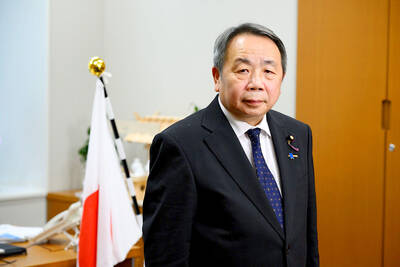Chunghwa Telecom in July received the highest number of complaints among the nation’s telecoms over the communication quality of its services, a report published on Monday by the National Communications Commission showed.
The commission in July received 547 complaints about mobile communication services offered by telecoms, up from 432 in June, it said.
Of those, 191 were over services provided by Chunghwa Telecom, followed by complaints about services offered by Taiwan Mobile at 107 and Far EastTone Telecommunications (FET) at 98, it added.
The number of complaints about the services offered by Chunghwa Telecom, the nation’s largest telecom, rose 31 percent from a year earlier, the commission said.
By contrast, FET, Taiwan Mobile, Asia Pacific Telecom (APT) and Taiwan Star saw the number of consumer complaints drop by 15 percent, 9 percent, 62 percent and 4 percent respectively, it said.
Chunghwa Telecom was also the only telecom in June to experience an increase in the number of complaints, with a 37 percent annual rise, the commission said.
When the ratio of the number of complaints to a telecom’s number of subscribers was examined, Taiwan Star topped the list with 35 complaints per million subscribers, while APT had 32 complaints per million subscribers and Chunghwa Telecom had 18 complaints per million subscribers.
Sixty-six percent of the total complaints were related to communication quality, the report showed.
Chunghwa Telecom also topped this category, receiving 141 complaints about its communication quality, 103 of whom were related to its voice communication service, rather than data communication service.
Carriers that have secured spectrum to develop 5G services are building base stations, but Chunghwa Telecom received the most complaints, the commission said.
The report also examined the time that each carrier took to handle and resolve the complaints.
On average, it took FET 13.6 days to address a complaint, the longest among all five carriers.
Chunghwa Telecom offered the fastest response to consumer complaints, addressing them within an average of 8.4 days.
Regarding the complaints over its communication quality, Chunghwa Telecom said that its 5G base stations are being built alongside existing 4G stations.
The entire 4G system has to be rewired and reactivated to start the 5G stations, which leads to an intermission of about 10 to 15 minutes, it said, adding that it would try to schedule construction work for off-peak hours and avoid having multiple simultaneous constructions within the same area.
Chunghwa Telecom chairman Hsieh Chi-mau (謝繼茂) said in an interview last month that the company saw its broadband service usage rate rise 30 percent during the COVID-19 pandemic, as more people stayed at home to access audiovisual content rather than going out.
This could cause subscribers to sometimes experience a slow transmission speed, he said.
The telecom has also told the media that it is building the nation’s only C-RAN network, an energy efficient system that would significantly reduce its maintenance costs and prevent a network problem from disrupting its entire system.

A strong continental cold air mass is to bring pollutants to Taiwan from tomorrow, the Ministry of Environment said today, as it issued an “orange” air quality alert for most of the country. All of Taiwan except for Hualien and Taitung counties is to be under an “orange” air quality alert tomorrow, indicating air quality that is unhealthy for sensitive groups. In China, areas from Shandong to Shanghai have been enveloped in haze since Saturday, the ministry said in a news release. Yesterday, hourly concentrations of PM2.5 in these areas ranged from 65 to 160 micrograms per cubic meter (mg/m³), and pollutants were

Taiwan’s armed forces have established response protocols for a wide range of sudden contingencies, including the “Wan Chun Plan” to protect the head of state, the Ministry of Defense (MND) said today. After US President Donald Trump on Saturday launched a series of airstrikes in Venezuela and kidnapped Venezuelan President Nicolas Maduro, concerns have been raised as to whether China would launch a similar “decapitation strike” on Taiwan. The armed forces regularly coordinate with relevant agencies and practice drills to ensure preparedness for a wide range of scenarios, Vice Minister of National Defense Hsu Szu-chien (徐斯儉) told reporters before a

EVA Airways on Saturday said that it had suspended a pilot and opened an investigation after he allegedly lost his temper and punched the first officer several times as their plane was taxiing before takeoff at Los Angeles International Airport. According to a report published on Thursday by The Reporter, the incident occurred after the flight’s Malaysian first officer tried to warn the Taiwanese pilot, surnamed Wen (文), that he was taxiing faster than the speed limit of 30 knots (55.6kph). After alerting the pilot several times without response, the first officer manually applied the brakes in accordance with standard operating

Japanese Councilor Hei Seki (石平) on Wednesday said that he plans to visit Taiwan, saying that would “prove that Taiwan is an independent country and does not belong to China.” Seki, a member of the Japan Innovation Party, was born in Chengdu in China’s Sichuan Province and became a naturalized Japanese in 2007. He was elected to the House of Concilors last year. His views on the Chinese Communist Party (CCP) — espoused in a series of books on politics and history — prompted Beijing to sanction him, including barring Seki from traveling to China. Seki wrote on X that he intends